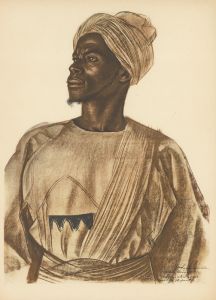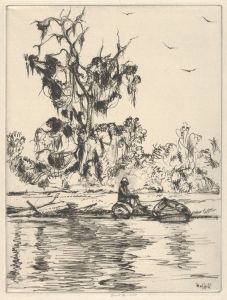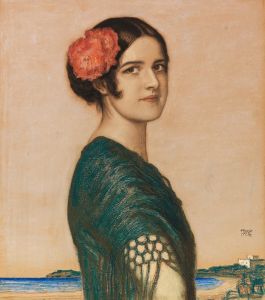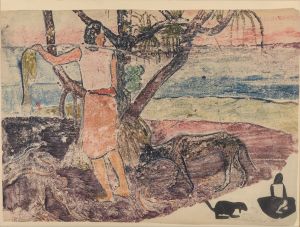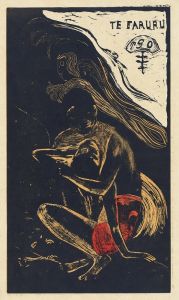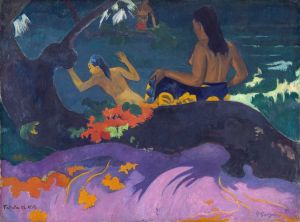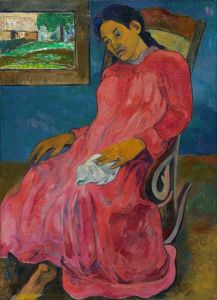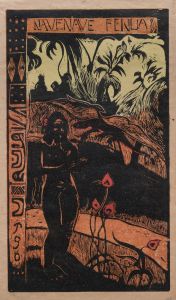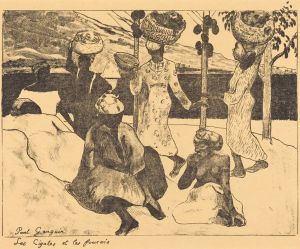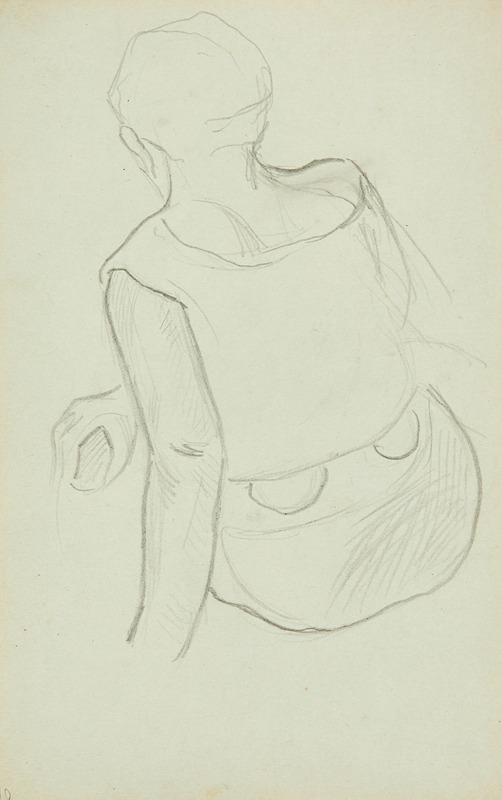
Femme tahitienne de dos
A hand-painted replica of Paul Gauguin’s masterpiece Femme tahitienne de dos, meticulously crafted by professional artists to capture the true essence of the original. Each piece is created with museum-quality canvas and rare mineral pigments, carefully painted by experienced artists with delicate brushstrokes and rich, layered colors to perfectly recreate the texture of the original artwork. Unlike machine-printed reproductions, this hand-painted version brings the painting to life, infused with the artist’s emotions and skill in every stroke. Whether for personal collection or home decoration, it instantly elevates the artistic atmosphere of any space.
"Femme tahitienne de dos" is a painting by the renowned French Post-Impressionist artist Paul Gauguin. Gauguin is celebrated for his bold use of color and synthetist style that were distinctly different from the Impressionist movement. His works often reflect his travels and the influence of the cultures he encountered, particularly during his time in Tahiti.
Gauguin first traveled to Tahiti in 1891, seeking to escape European civilization and "everything that is artificial and conventional." His time in Tahiti had a profound impact on his art, as he immersed himself in the local culture and sought to capture the essence of Tahitian life and people. This period marked a significant phase in his artistic career, where he produced some of his most famous works.
"Femme tahitienne de dos," which translates to "Tahitian Woman from the Back," is one of the many paintings Gauguin created during his stay in Tahiti. The painting depicts a Tahitian woman from behind, showcasing Gauguin's fascination with the human form and his interest in the people of Tahiti. The composition is simple yet powerful, focusing on the silhouette and posture of the woman, which conveys a sense of mystery and introspection.
Gauguin's use of color in this painting is characteristic of his style during his Tahitian period. He employed a palette that was vibrant and expressive, often using colors symbolically rather than realistically. This approach was part of his broader artistic philosophy, which sought to convey emotion and meaning through color and form rather than through detailed representation.
The painting reflects Gauguin's interest in the themes of primitivism and the exotic, which were prevalent in his work during this time. He was drawn to what he perceived as the unspoiled and natural beauty of Tahitian life, contrasting it with the industrialized and modern world he left behind in Europe. This perspective, however, has been the subject of much critical discussion, as it reflects the colonial attitudes of the time and Gauguin's own romanticized view of Tahiti.
"Femme tahitienne de dos" is an example of Gauguin's ability to blend his personal vision with the influences of the cultures he encountered. His work in Tahiti, including this painting, has been influential in the development of modern art, inspiring future generations of artists to explore new forms and ideas.
Today, Gauguin's paintings from his Tahitian period are highly regarded and continue to be studied for their innovative use of color and form. They are also examined within the context of post-colonial studies, as they offer insights into the cultural dynamics and perceptions of the time. "Femme tahitienne de dos" remains a significant piece within Gauguin's oeuvre, exemplifying his artistic journey and the lasting impact of his time in Tahiti.





